Dean Karau column: In the '40s, Illinois joints were jumpin' to Kewanee's Accordion Band
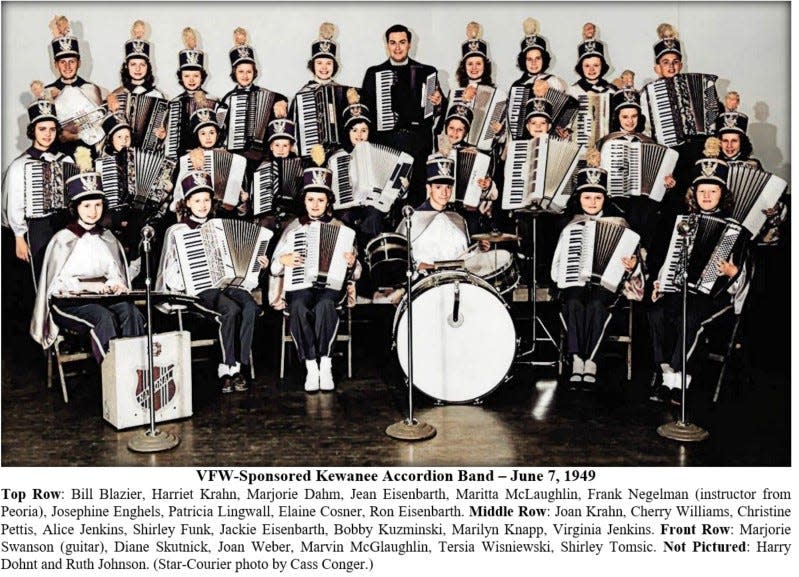
(Author's note: This story was originally published in June 2019, and has been updated in memory of my cousin, Marilyn Knapp Kelly, who passed away this week.)

About 5,000 years ago, the Chinese developed the “cheng,” the first known instrument using a free vibrating reed to create sound. It was introduced to Europeans in the late 18th century.
In 1822, German Christian Buschmann developed the “handaeoline.” In 1829, Romanian-born Austrian Cyrillus Damian added four chord-producing bass keys and called his improvement an “accordion.”
The accordion continued to change over the rest of the 19th century. In the early 20th century, manufacturers settled on a standard size and shape for the instrument, although improvements, many significant, continued.
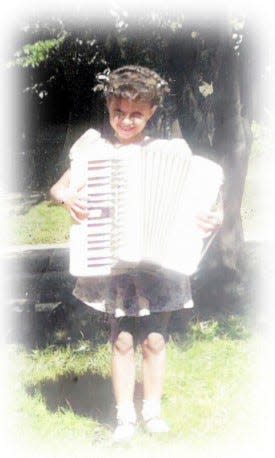
Because amplification did not exist yet, the accordion became popular since it was both portable and loud enough to be played and heard from front porches, at weddings, dances, and taverns. It became a musical instrument “of the people.”
The accordion’s popularity reached Kewanee, where Eddy & Keeler was selling accordions from its Tremont Street store at least as early as the 1880s.
By 1937, Kewanee’s Belson Music Company was advertising in the Kewanee Star Courier, not just for its music instructions, but to announce the formation of an accordion band. Belson continued running its ads and the interest in an accordion band grew.
The July 23, 1940, Kewanee Star Courier, reported that a “newly organized Kewanee Accordion band under the direction of Ray E. Bannon will go to Starved Rock State Park, to participate in the elaborate Accordion Festival to be held there Aug 4,” where it would play along with 14 other bands and in front of an expected audience in excess of 25,000 people. It was the first public appearance for the 30-plus member band which had been organized six weeks earlier by Bannon, owner of the Bannon Music Shop on Tremont Street.
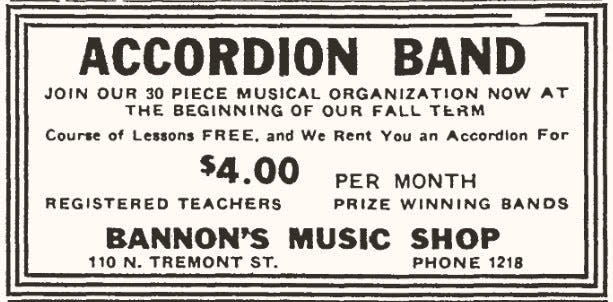
By 1941, the Kewanee Accordion Band was in high demand, playing at events and venues around Kewanee, surrounding towns, and the state, garnering competition wins and statewide recognition, including taking second place at that year’s Starved Rock State Park Accordion Fiesta.
But the highlight of the year was when the band took second place in the state accordion band contest held in Springfield at the State Fair later in the year. By the end of the year, the band had grown to 50 members, and a junior accordion band and a parent association were formed.
In 1942, the Illinois Accordion Band Association named the Kewanee Accordion Band “an outstanding band,” and the band was honored by being asked to host the Association’s annual meeting and to give demonstrations and hold clinics during the meeting.
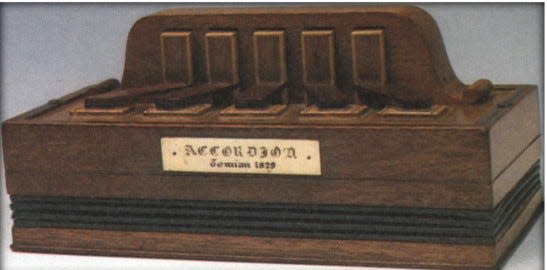
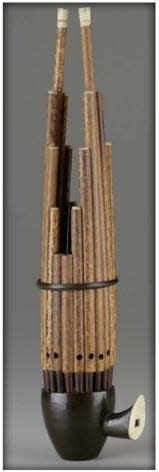
The band’s activities may have slowed during the war years, but by 1946, it again had a full schedule of events. In addition, the Veterans of Foreign Wars Kewanee Post 2675 agreed to sponsor the band, including furnishing quarters for rehearsal, administering the band’s affairs, and assisting in its appearances.
In 1949, Frank Neggelman of Peoria was named director of the band. The April 9, 1949, Star Courier described him as an “outstanding musician in this part of the state. Known as the ‘King of the Accordion,’ he has broadcast radio programs over major networks and has made many recordings. The VFW accordionists are planning an ambitious summer schedule, including many appearances in this part of the state.”
Over the years, the Kewanee Accordion Band continued to play regularly in town, in towns around the area, and in festivals statewide, such as at the annual Chicago Musicland festival at Soldiers Field in 1951.
My cousin, Marilyn Knapp Kelly, who played with the band from the late forties through the early fifties, fondly remembered that the accordion was very popular with the kids. Marilyn recalled that there was a handsome accordion player on television who may have influenced some of them to learn to play the instrument. She said that everyone seemed to really enjoy practicing, and they all seemed to get along so well.
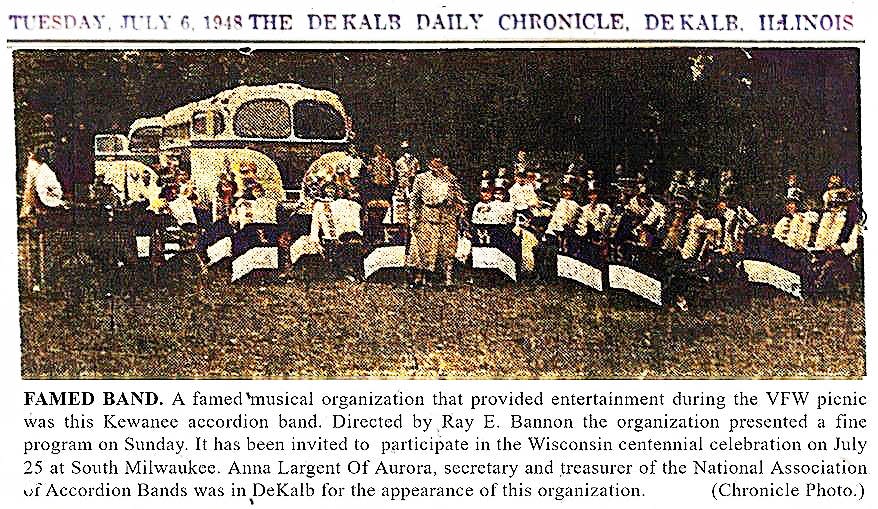
When traveling, the band members rode in a bus while the parents followed behind in their cars. Most parents enjoyed the band, too, making new friends as they traveled about the county and state.
The band members wore satin white blouses, royal blue pants, and stylish hats with plumes. They marched in many parades in those uniforms, regardless of the heat.
Some of the band members would get together in smaller groups to play publicly. Marilyn recalled playing with a friend or two for weddings, and other smaller events. The smaller groups would also play at high school assemblies, and one even played on WKEI radio.
In the 1950s, the music stores in town continued to form bands with new players, but rock ’n roll was taking the country by storm. Clearly, by then, the heyday of the band had passed.
But many Kewaneeans, band members and non-band members alike, still have fond memories of the Kewanee Accordion Band and the joy it brought to our hometown.
This article originally appeared on Star Courier: In the '40s, Illinois joints were jumpin' to Kewanee's Accordion Band

